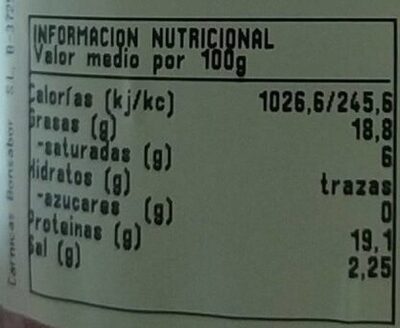Cabeza de cerdo - Campesano - 158 g
Aquesta pàgina del producte no està completa. Podeu ajudar a completar-la editant-la i afegint-hi més dades a partir de les fotos ja disponibles, o fent-ne més amb l'aplicació de androide o iPhone / iPad. Gràcies!
×
Codi de barres: 2401653001587 (EAN / EAN-13)
Quantitat: 158 g
Marques: Campesano
Etiquetes, certificacions, premis: Lliure de gluten, Sense lactosa
Països on es va vendre: Espanya
Matching with your preferences
Entorn
Empaquetament
Transport
Report a problem
Fonts de dades
Producte afegit per kiliweb
Última modificació de la pàgina del producte per ecoscore-impact-estimator.
La pàgina del producte, també editada per chevalstar, roboto-app, thaialagata, yuka.sY2b0xO6T85zoF3NwEKvllUbUsaPjQ_VDTLgm3Ss98eCCY7COftT4Nf9Fqs.
Si les dades són incorrectes o incompletes, pot completar o corregir editant aquesta pàgina.








